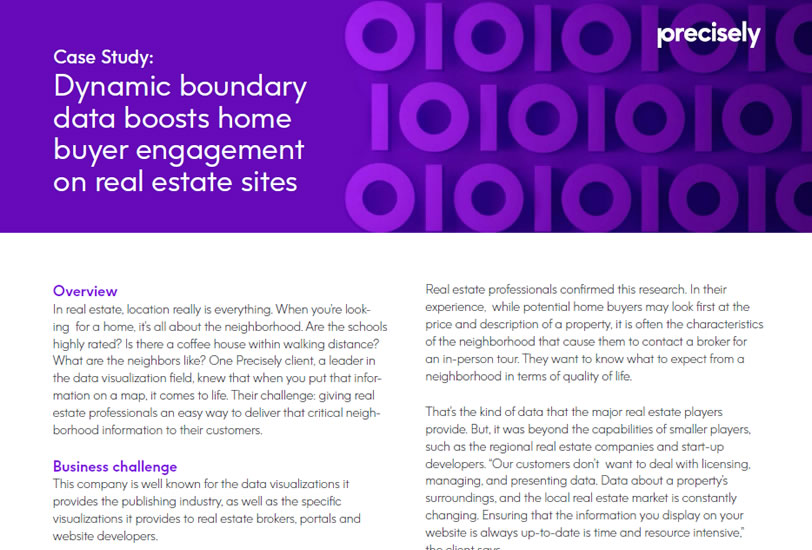Customer Story
Dynamic Boundary Data Boosts Home Buyer Engagement
In real estate, location really is everything. When you’re looking for a home, it’s all about the neighborhood. Are the schools highly rated? Is there a coffee house within walking distance? What are the neighbors like? One Precisely client, a leader in the data visualization field, knew that when you put that information on a map, it comes to life. Their challenge: giving real estate professionals an easy way to deliver that critical neighborhood information to their customers. The solution: incorporating dynamic boundary data to boost home buyer engagement.
This company is well known for the data visualizations it provides the publishing industry, as well as the specific visualizations it provides to real estate brokers, portals and website developers. The company had an extensive suite of relevant real estate data, which it presented largely through interactive bar charts. “We had our own demographic information on the zip code level, but our customers were asking for the next level of granu-larity,” says the client. That next level is neighborhood data.
Taking it to the next level with dynamic boundary data
Neighborhood boundaries are more relevant for real estate customers than zip codes. Often, zip codes are too broad to be useful. For example, one area of a zip code may be a neighborhood of multi-million dollar homes, while another area may consist of industrial establishments. Neither area accurately reflects the local market or gives potential home buyers a feel for where they’d be living. Neighborhoods, on the other hand, offer more granular, local information that’s reflective of what matters to a potential home buyer. “Neighborhood data provides the information potential buyers want; it’s ultimately the level of detail where purchase decisions are being made,” the client says.
Real estate professionals confirmed this research. In their experience, while potential home buyers may look first at the price and description of a property, it is often the characteristics of the neighborhood that cause them to contact a broker for an in-person tour. They want to know what to expect from a neighborhood in terms of quality of life.
